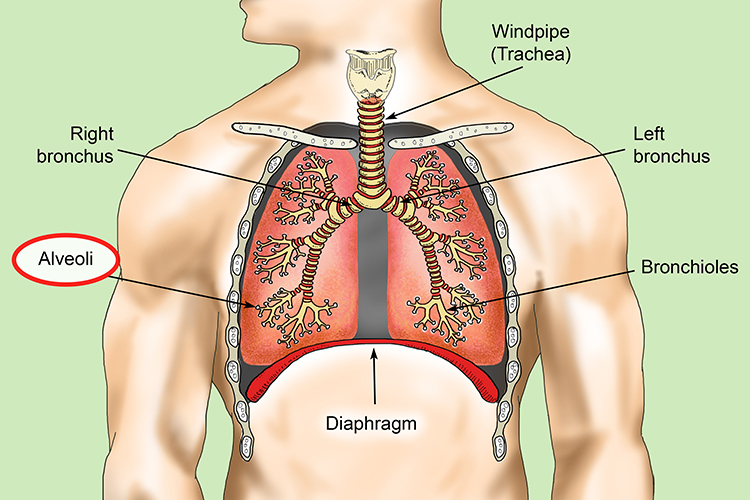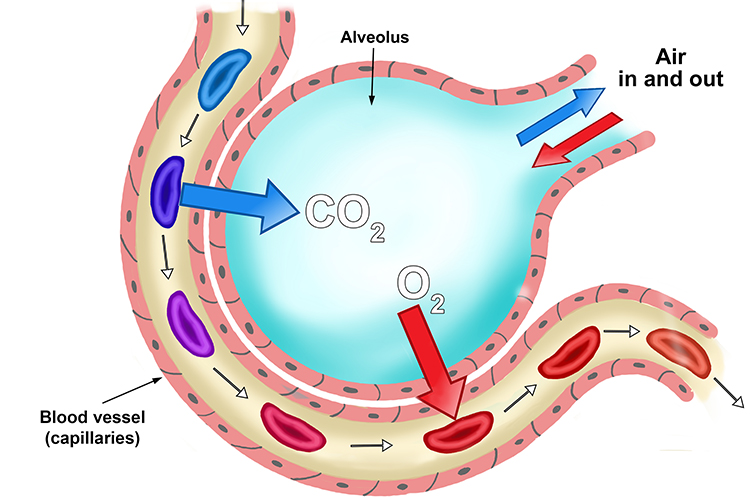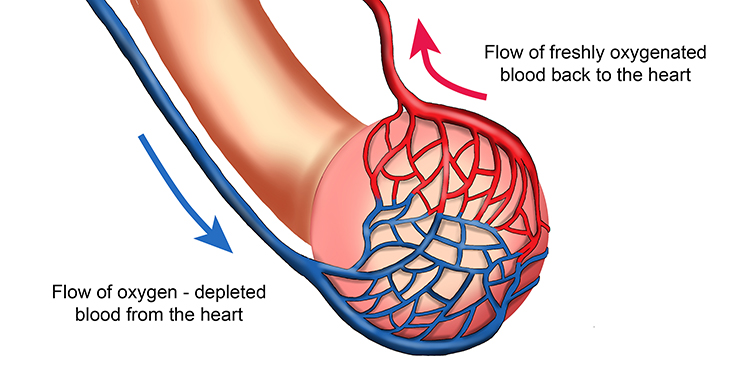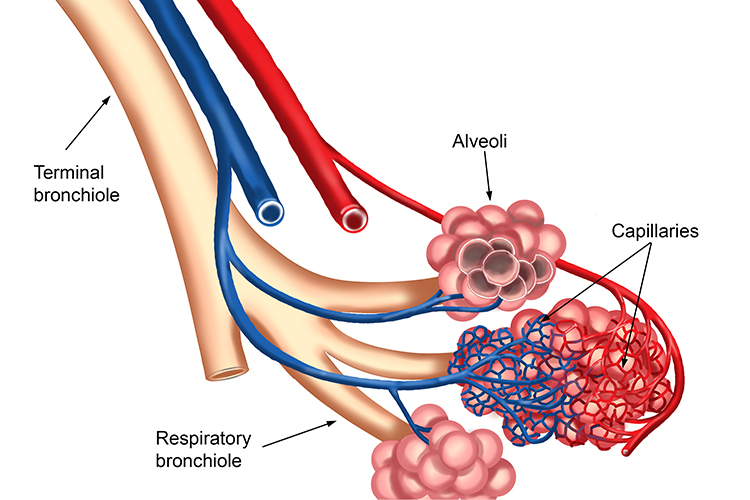Alveolus
Eventually the bronchioles come to a small cavity, pit or hole with a sac.
The Alveolus (singular) is a tiny air sac within the lungs where the exchange of oxygen and carbon dioxide take place.

All violas (Alveolus) are in a large sack (sac), they had arrived for the chamber orchestra.
Note: alveolus is one; alveoli is more than one.
Eventually the bronchioles come to a dead end, like a set of interconnected caves. Each one is called an alveolus (plural: alveoli).

Here you can see the alveoli at the end of the bronchioles.

There are as many as 170,000 alveoli per cm3.

The alveolus is a sac which allows gas exchange of oxygen and carbon dioxide by diffusion. The alveoli have thin walls to aid this diffusion.

A network of tiny blood vessels, called capillaries, covers the surface of the alveolus to facilitate oxygen and carbon dioxide exchange.

This diagram shows how the blood vessels spread all around the alveoli. The blood in the capillaries is very close to the alveoli, enabling oxygen to diffuse from the inhaled air into the blood, while carbon dioxide diffuses out of the blood into the alveolus sac ready to be exhaled.
NOTE
Alveolus (the ‘us’ is singular)
The Alveoli (the ‘i’ is plural)




